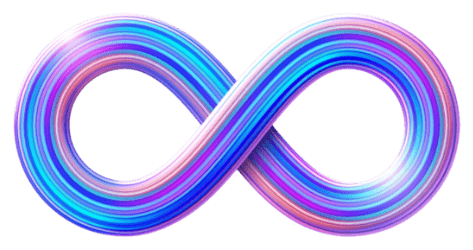More
- Triads in Major Scale Series - Part 2LEVEL 3In this 2nd part we will focus on 1st inversions of triads. We will use interval of diatonic 2nd as harmonizing tool.
- Triads in Major Scale Series - Part 3LEVEL 3In this 3rd part we will focus on 2nd inversions of triads. We will use interval of diatonic 2nd as harmonizing tool.
- Open Triads In G Major Scale Series - Part 1LEVEL 3We focus on learning open triads and how to apply them in musical context. Harmonization technique using cycle 2 and 7 is applied through the series.
- Open Triads in G Major Scale Series - Part 2LEVEL 3We focus on learning open triads and how to apply them in musical context. Harmonization technique using cycle 2 and 7 is applied through the series.
- Open Triads in G Major Scale Series - Part 3LEVEL 3Open Triads In G Major Scale Series - Part 3. 2nd inversion covered on string sets 642, 531 and 421.
- How to Riff Series (Part 1)LEVEL 4In this series we´ll work on riffs, groove and rhythm. All we need to improve our skills.
- The Major ScaleLEVEL 1An introduction to music theory and the most fundamental scale.
- Mixing Major and Minor Scale Boxes #1LEVEL 3In this solo we will try to demonstrate how to mix major and minor blues patterns to create a natural mix between major and minor voiced phrases. This is the part one where we will cover position 1 of the minor pentatonic scale on top of the position position 1 of the major pentatonic scale.
- How to Riff Series (Part 2)LEVEL 5In this series we´ll work on riffs, groove, rhythm - all we need to improve our skills.
Feedback
 Cosmin Lupu27th November 2013
Cosmin Lupu27th November 2013Thanks for the comment Walid!
Walid K26th November 2013
great work, thank you! Your lessons are very well written and organized
 Pedja Simovic3rd October 2009
Pedja Simovic3rd October 2009Thanks Marcus

 Marcus Siepen26th September 2009
Marcus Siepen26th September 2009very useful lesson
 Pedja Simovic23rd September 2009
Pedja Simovic23rd September 2009Thank you Toni!
 Toni Suominen21st September 2009
Toni Suominen21st September 2009Nice one Pedja!
 Pedja Simovic21st September 2009
Pedja Simovic21st September 2009Thank you Emir, I agree with you

 Emir Hot21st September 2009
Emir Hot21st September 2009Great lesson Pedja. Everyone should know these shapes. Well done
 Pedja Simovic20th September 2009
Pedja Simovic20th September 2009Glad you think so Sinisa

 Sinisa Cekic20th September 2009
Sinisa Cekic20th September 2009Useful lesson indeed Pedja !!

 Pedja Simovic20th September 2009
Pedja Simovic20th September 2009Thank you guys, I hope you will use these in your comping and songwriting.
 kaznie_NL20th September 2009
kaznie_NL20th September 2009thanks Pedja!
 Bogdan Radovic19th September 2009
Bogdan Radovic19th September 2009Very good job Pedja! This is essential!

 NoSkill19th September 2009
NoSkill19th September 2009Useful stuff as always, Pedja.
 Pedja Simovic19th September 2009
Pedja Simovic19th September 2009Glad you find it useful guys. Let me know if you got any questions about it!
 Ivan Milenkovic19th September 2009
Ivan Milenkovic19th September 2009Essential stuff Pedja, great!

 Laszlo Boross19th September 2009
Laszlo Boross19th September 2009Great lesson Pedja! Very useful.


 Jonathan Burgos19th September 2009
Jonathan Burgos19th September 2009well done partner!
 playaxeman19th September 2009
playaxeman19th September 2009Very Very useful lesson
thx Pedja Sensible Jones19th September 2009
Sensible Jones19th September 2009Great idea Pedja!! 'Must know' stuff for everyone, very useful for learning how to Harmonise!!!

 Stephane Lucarelli19th September 2009
Stephane Lucarelli19th September 2009Stuff You Must Know!
Nice lesson Pedja
 Frederik19th September 2009
Frederik19th September 2009This one will be very good for me
 Pedja Simovic19th September 2009
Pedja Simovic19th September 2009Thank you Kristofer, hope members will enjoy it !
 Kristofer Dahl19th September 2009
Kristofer Dahl19th September 2009Great Pedja - this looks like it will be a usueful series for our archive!

- Lesson
- My notes
Hello GMC!
Welcome to my new series. Today we are focusing on triads in major scale. This series will have 3 parts and will cover all possible triad inversions all across the guitar neck. Before getting further lets mention a couple of things about triads!What are triads? Simply put, a triad is a 3 note chord! Is it any 3 notes that make a chord? Well, not really :) Triads are constructed by stacking intervals of diatonic 3rds one on top of another. What does the term diatonic mean? It means that we can use only notes that belong to particular scale. In these series we are focusing on C major scale because it has no sharps and flats. I encourage you very much to apply all this material in all 12 keys! In fact, I hope you really do it as it will enrich your chord vocabulary and give you more choices when accompanying singer/soloist, playing songs, songwriting or writing your own arrangements!
When talking about triads, we actually have 3 possibilities how to play them. These possibilities are called inversions simply because we have different order of notes within a triad or any chord.
Every triad has some sort of Root, 3rd and 5th. In key of C major if we were to have some sort of C chord it would be C E and G notes. Why these notes you wonder? C major scale has the following notes : C D E F G A B C. If triads are built by stacking diatonic 3rds (every other note in the scale) then if we start with C (root) we skip D and get E, then skip F and get G! So our triad from C note is C E G. You can now do all the rest of them to get some theory and harmony moving in your mind.
Speaking of inversions here are possible inversions for C major triad (CEG). The same principle applies to all triads in C major scale.
1) Root inversion (C E G)
2) 1st inversion (E G C)
3) 2nd inversion (G C E)
As you see root inversion has Root in the bottom of the chord, 1st inversion has 3rd and 2nd inversion has a 5th in bottom.
Todays part 1 lesson of the series focuses on Root inversion of triads in C major scale.
Make sure you check out spoken video for more explanations and practicing suggestions.
For this lesson I used my custom built guitar going through POD X3 Live into Nuendo. The effect I used was called "Clean chorus" with slight delay modifications.
When you finish part 1 of the triad series you will :
- Expand your chord vocabulary
- Learn root inversion triads in major scale on all 4 possible string sets (654,543,432 and 321)
- Learn how to apply those voicings in other styles of music
- Expand your songwriting skills with more voicings
- Improve your fingerstyle technique
I hope you enjoyed part 1 of triads in major scale series. Let me know if you have any questions and I look forward hearing from you all.
Pedja
From this course:
- Triads in Major Scale Series - Part 2LEVEL 3In this 2nd part we will focus on 1st inversions of triads. We will use interval of diatonic 2nd as harmonizing tool.
- Triads In a Song ContextLEVEL 3This lesson uses triads from C major scale series in musical context.
- Triads in Major Scale Series - Part 3LEVEL 3In this 3rd part we will focus on 2nd inversions of triads. We will use interval of diatonic 2nd as harmonizing tool.
Jump to start: Home or `s` , you can also click/tap the lesson part again (the numbers above player)
Go to next part: PageUP or End.
Volume: ArrowUp / ArrowDown keys
Go to any part: Number keys (combinations also possible)
Pause or play: `k` or space key
Fullscreen: `f`, esc to close
Increase / decrease speed : `+` or `-`







